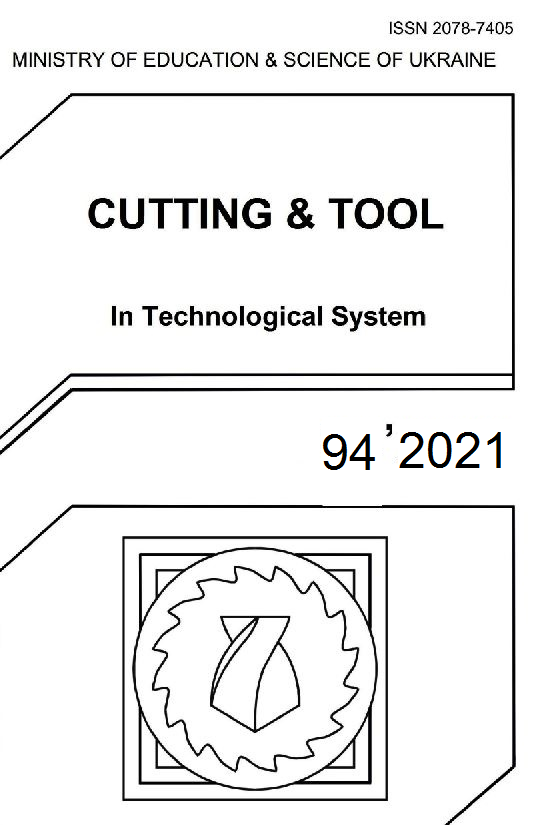SURFACE ROUGHNESS MODELING DURING ELECTRIC DISCHARGE GRINDING WITH VARIABLE POLARITY OF ELECTRODES
DOI:
https://doi.org/10.20998/2078-7405.2021.94.09Keywords:
spatial position of erosion pits, statistical dimensions, roughness parameters, electrical modesAbstract
The article presents the probabilistic-statistical modeling of surface roughness in the process of electric discharge grinding with the variable polarity of electrodes. The correlation between electric modes of machining and indicators of the quality of the machined surface was established. A probabilistic-statistical model of part surface roughness formed during grinding is obtained, which establishes the correlation between high-altitude surface parameters and electrical machining modes. The developed model makes it possible to calculate the height parameters of the part roughness depending on the electrical modes of grinding. The height of microroughness is determined by the same machining conditions as the depth of erosion pits. It is possible to obtain low roughness if electrical machining modes are reduced.
References
Strelchuk R.M., Uzunian M.D. Sposib elektroeroziinoho almaznoho shlifuvannia zi zminnoiu poliarnistiu elektrodiv, Patent UA, no. 131894, 2019
Montes, J., Cuevas, F., Reina, F. Modelling and Simulation of the Electrical Resistance Sintering Process of Iron Powders // Met. Mater. Int. 26, pp. 1045–1059 (2020)
D’Urso, G., Maccarini, G., Ravasio, C. Influence of electrode material in micro-EDM drilling of stainless steel and tungsten carbide // Int J. Adv. Manuf. Technol. 85, pp. 2013–2025 (2016)
Giridharan, A., Samuel, G. Investigation into erosion rate of AISI 4340 steel during wire electrical discharge turning process // Machining Science and Technology, pp. 287–298, (2018)
R.Andreani, G.Haeser, J.M.Martínez // On sequential optimality conditions for smooth constrained optimization, Optimization 60 (2011), pp. 627–641
Downloads
Published
Issue
Section
License
Copyright Notice
Authors who publish with this Collection agree to the following terms:
1. Authors retain copyright and grant the Collection right of first publication with the work simultaneously licensed under a Creative Commons Attribution License that allows others to share the work with an acknowledgement of the work's authorship and initial publication in this Collection.
2. Authors are able to enter into separate, additional contractual arrangements for the non-exclusive distribution of the Collection's published version of the work (e.g., post it to an institutional repository or publish it in a book), with an acknowledgement of its initial publication in this Collection.
3. Authors are permitted and encouraged to post their work online (e.g., in institutional repositories or on their website) prior to and during the submission process, as it can lead to productive exchanges, as well as earlier and greater citation of published work.

